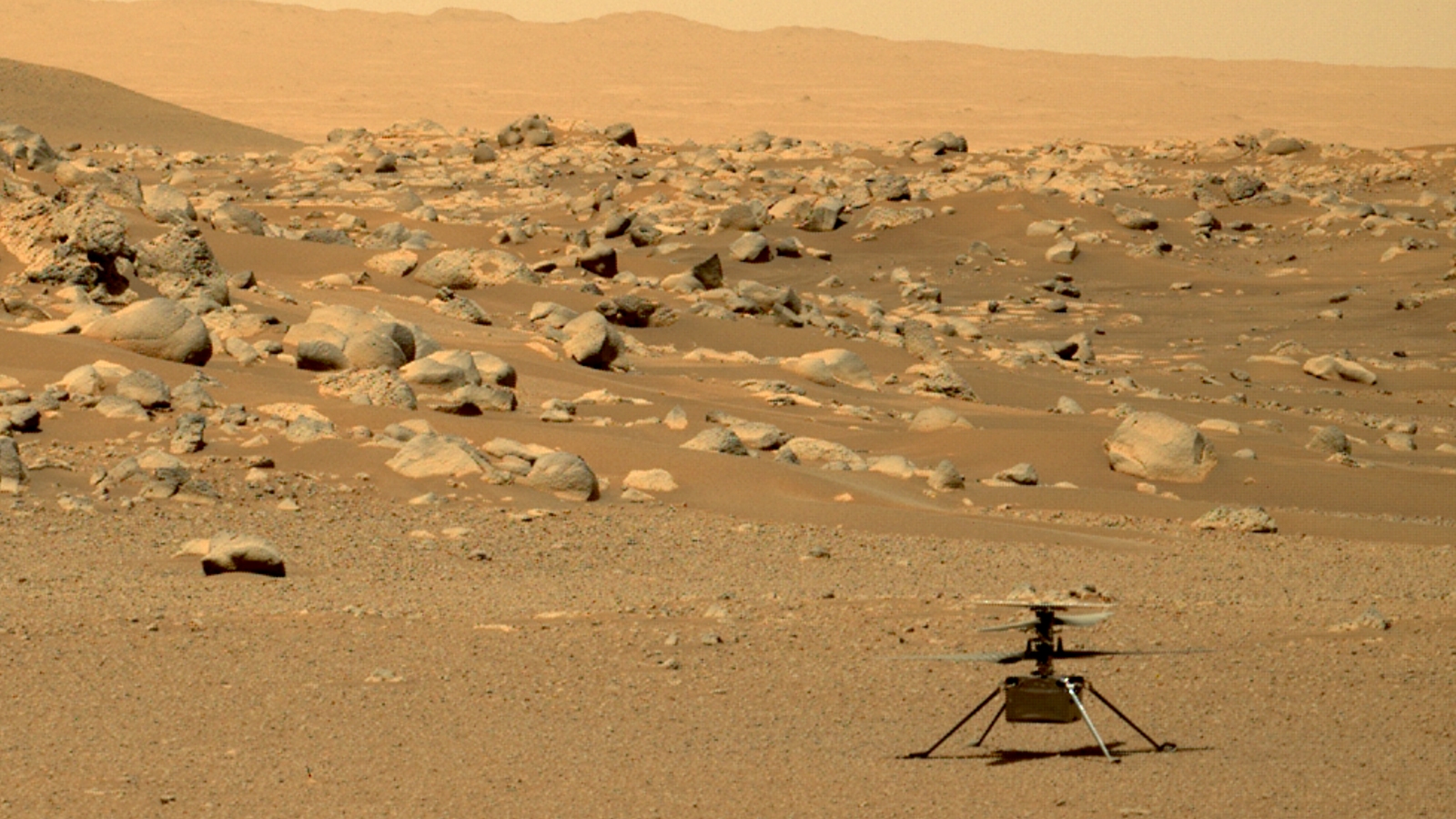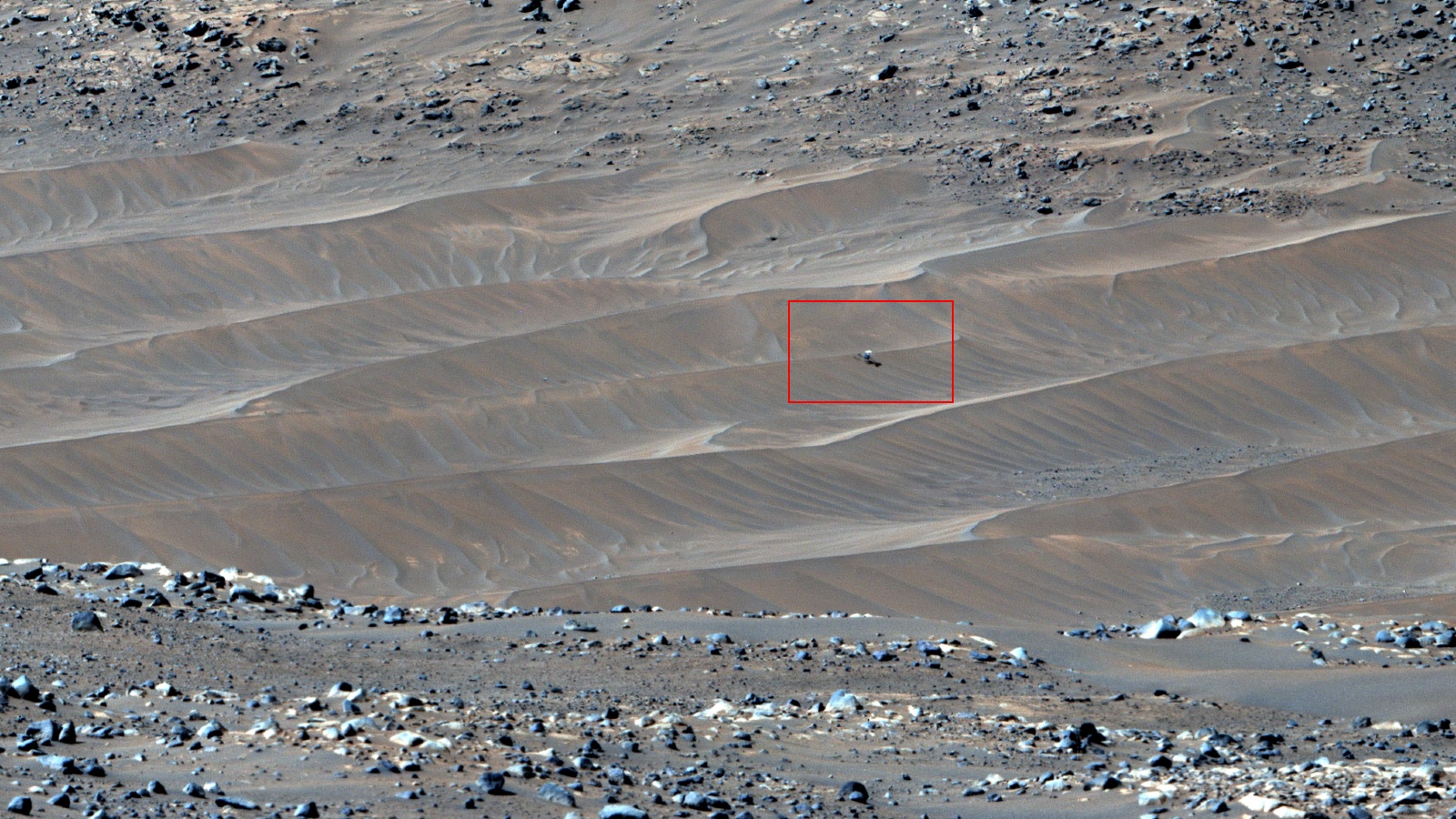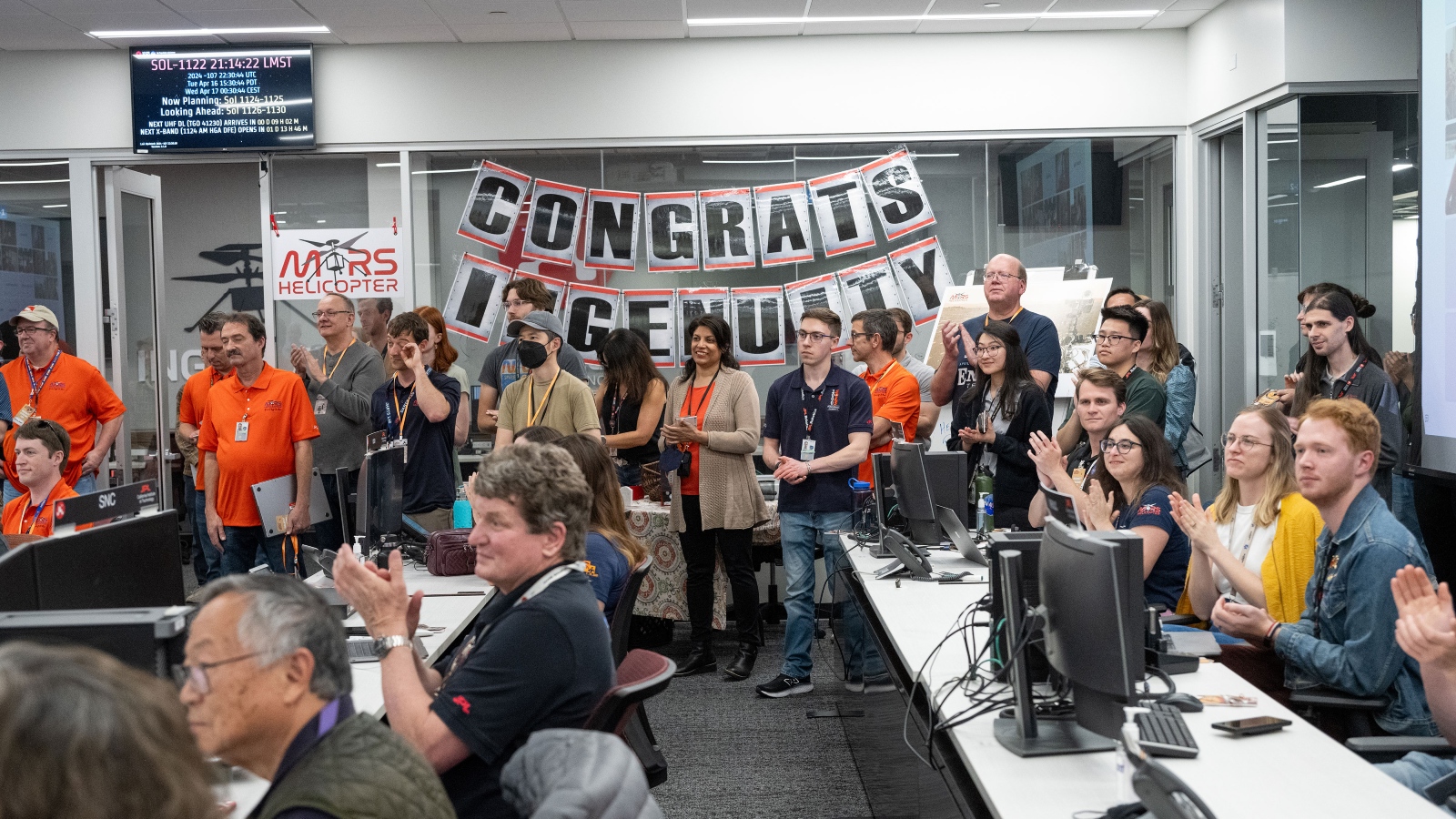
NASA's Ingenuity Mars Helicopter has beamed back its final message to Earth, which included a heart-warming goodbye to mission scientists. The record-breaking robot will now spend the rest of its days collecting data that could be used in future Mars missions — but only if future robots or astronauts go all the way to the Red Planet to get it.
The pigeon-size helicopter, or rotorcraft, first landed on the Red Planet on Feb. 18, 2021, alongside the Perseverance rover, and it successfully completed the first-ever powered flight on an alien world on April 19 of the same year.
The Ingenuity mission's initial goal was to fly five missions across 30 days. But the tiny chopper ended up flying 72 times on Mars, spending more than two hours in the air and traveling 14 times farther than initially planned, according to a statement by NASA.
However, during what turned out to be its final flight on Jan. 18 this year, the flying robot crash-landed after briefly losing contact with NASA controllers. The helicopter only dropped from around 3 feet (1 meter) above the ground, but it sustained irreversible damage to two of its four rotor blades, with part of one blade later spotted on the ground near the chopper. As a result, the mission officially ended on Jan. 25.
On April 16, Ingenuity beamed back its final signal to Earth, which included the remaining data it had stored in its memory bank and information about its final flight.
Related: Mars helicopter photographs wreckage of its own landing gear in eerily desolate image

Ingenuity mission scientists gathered in a control room at NASA's Jet Propulsion Laboratory (JPL) in California to celebrate and analyze the helicopter's final message, which was received via NASA's Deep Space Network, made up of ground stations located across the globe.
In addition to the remaining data files, Ingenuity sent the team a goodbye message including the names of all the people who worked on the mission. This special message had been sent to Perseverance the day before and relayed to Ingenuity to send home.
The helicopter, which still has power, will now spend the rest of its days collecting data from its final landing spot in Valinor Hills, named after a location in J.R.R. Tolkien's "The Lord of the Rings" books.
The chopper will wake up daily to test its equipment, collect a temperature reading and take a single photo of its surroundings. It will continue to do this until it loses power or fills up its remaining memory space, which could take 20 years. Such a long-term dataset could not only benefit future designs for Martian vehicles but also "provide a long-term perspective on Martian weather patterns and dust movement," researchers wrote in the statement.

However, the data will be kept on board the helicopter and not beamed back to Earth, so it must be retrieved by future Martian vehicles or astronauts.
"Whenever humanity revisits Valinor Hills — either with a rover, a new aircraft, or future astronauts — Ingenuity will be waiting with her last gift of data," Teddy Tzanetos, an Ingenuity scientist at JPL, said in the statement.
Despite the unfortunate end of the Ingenuity mission, it will go down in history as a massive success, researchers said.
"It is almost unbelievable that after over 1,000 Martian days on the surface, 72 flights, and one rough landing, she still has something to give," Josh Anderson, leader of the Ingenuity team at JPL, said in the statement. "Not only did Ingenuity overachieve beyond our wildest dreams, but also it may teach us new lessons in the years to come."







